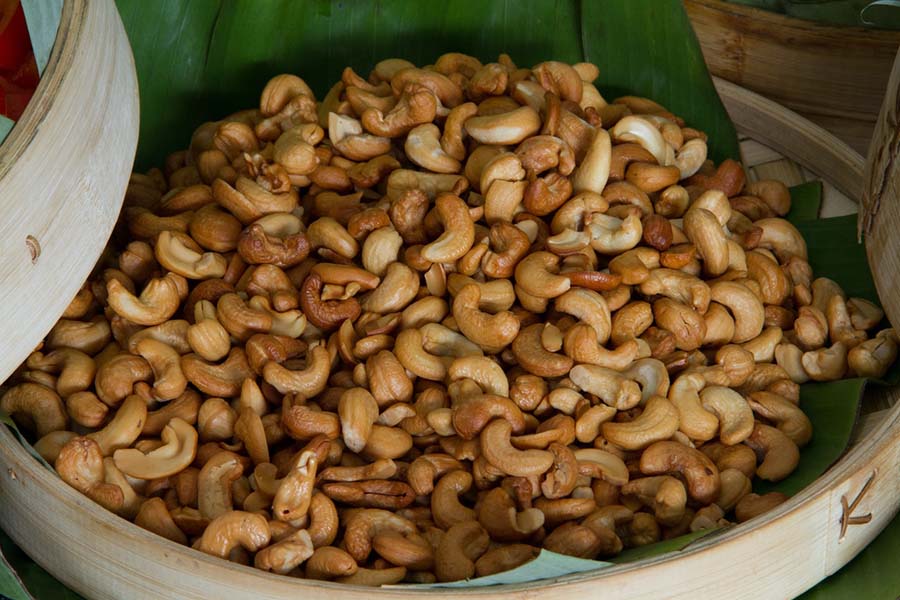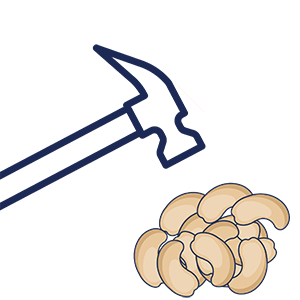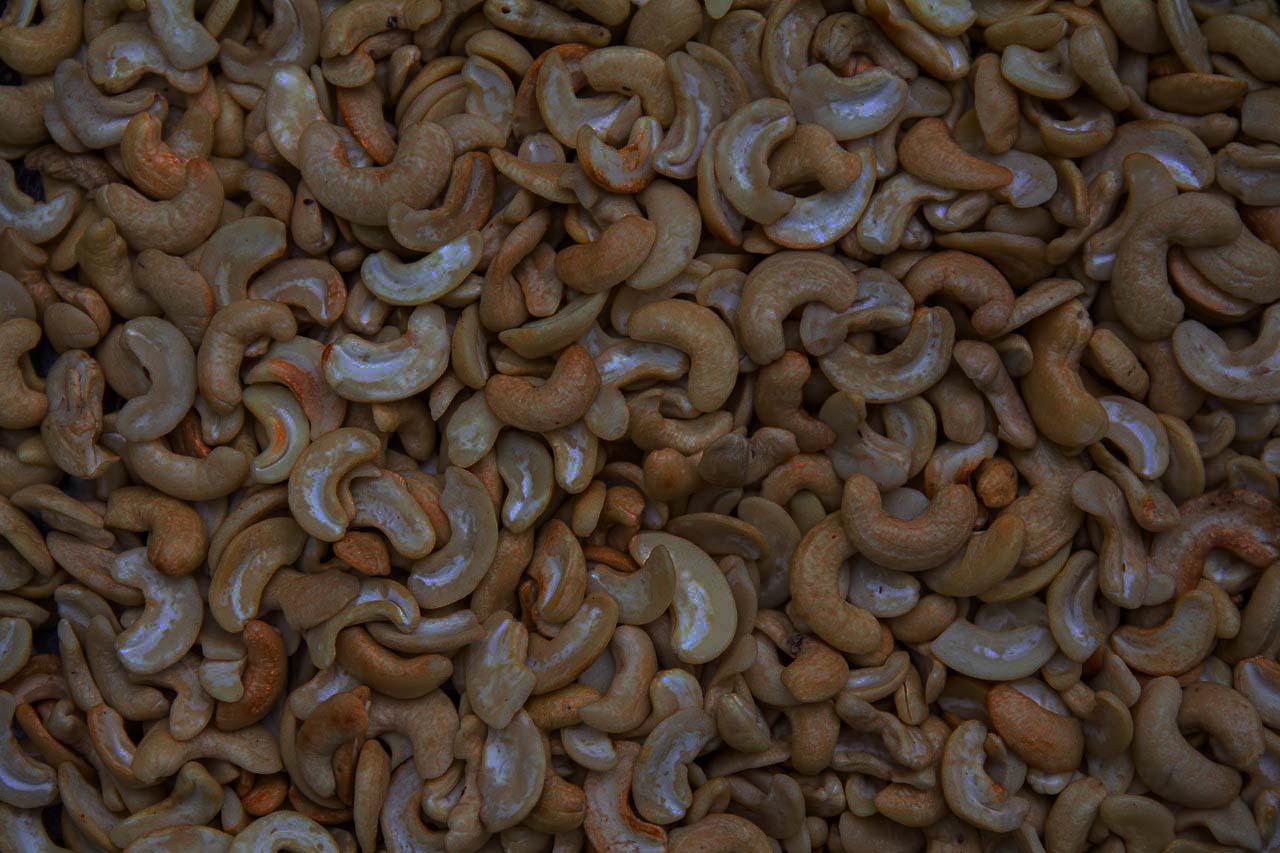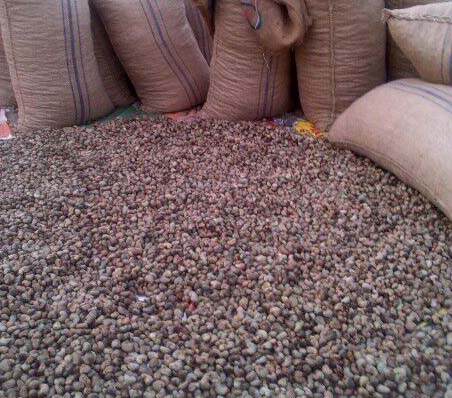Cashew Nuts
The raw cashew nut processing process starts with properly drying and storing the raw cashew nuts for processing all year round. The next steps involve various activities to remove the cashew kernel from its shell. The final edible consumer product is the cashew kernel. This complex process results in high value addition to the raw cashew nut.
The objectives of raw cashew nut processing are:
• Avoiding breakage of the kernels
• Ensuring that the distinctive light ivory cashew color is maintained
• Maintaining the natural taste of the kernels. Note that naturally tasting cashew kernels are free from chlorophenol off flavors.
• Ensuring kernels uphold international food safety standards for consumption The achievement of these objectives results in obtaining high quality cashew kernels at competitive prices.

Raw Cashew Nut processing involves three (3) key stages:

Heat treatment
The application of direct heat, hot oil or steam, prepares the raw cashew nuts for shelling and facilitates removal of the shell.

Shelling and Peeling
The hard shell is either cracked or cut to expose the kernel with testa for separation from the shell. The testa of the cashew kernel has to be removed after shelling. The white kernels are obtained after removing the shell and the testa. The shells contain the corrosive Cashew Nut Shell Liquid (CNSL) which can burn or blister the hands of workers. It can also cause damage to cashew processing machinery.

Grading
The final stage of the primary processing process is the classification of kernels and packaging for distribution and sale.

The six (6) commonly adopted steps in raw cashew nut processing are:

1. Drying of RCN (Raw Cashew Nut)
2. Pre-treatment of RCN (Warehousing, Calibration and Heat Treatment)
3. De-shelling (Removal & Separation, oven drying and humidification of kernels)
4. Peeling (Removal of the testa from the kernel)
5. Grading of the kernels (Classification of kernels into different quality grades)
6. Packaging the kernels for storage and shipment
